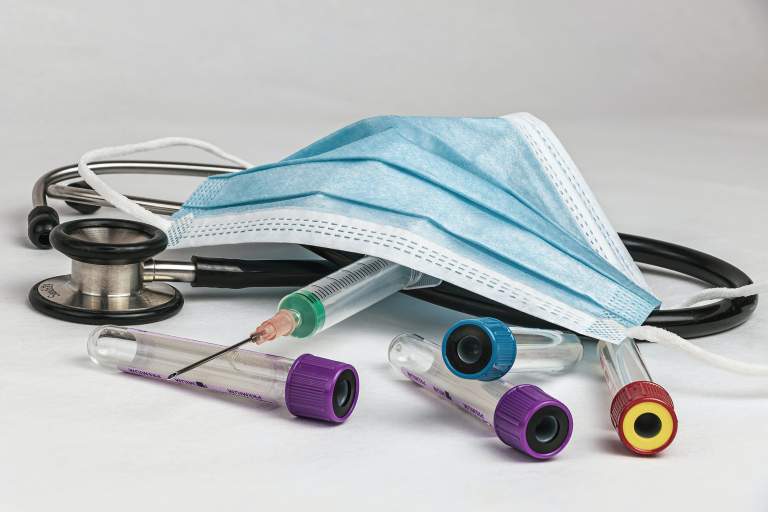Did You Know?

Biologics Series: Challenges Facing the Use of Biologics
Posted November 28, 2023
While biologics have shown promise as treatments for musculoskeletal conditions, it's essential to be mindful of the challenges surrounding these therapies.
Since 2018, there have been about 40 quality studies that clearly show the efficacy of Platelet-rich-Plasma (PRP). But despite such research, insurance carriers do not currently cover treatments using biologic agents.
What they do cover are corticosteroid injections and viscosupplements (gels). However in the past two years, research has emerged showing that all corticosteroids are toxic to the cartilage in a joint—as are the local anesthetics which oftentimes accompany the steroid injected. The only exception to this is a so-called wet joint with significant swelling (synovitis).
Of the four main types of injectable steroids, research has shown which of these are the most and least toxic to joint cartilage—the same applies to local anesthetics. The key to a successful injection and ensuring it is performed when there is a clear indication starts with identifying a wet joint. Afterward, choosing the least toxic steroid and local anesthetic at the lowest effective dose is crucial. Finally, the procedure should be conducted under either ultrasound guidance or fluoroscopy (x-ray) to ensure it reaches the target area. Physicians who claim this is not necessary, claiming that they never miss, may not be aware that even in the easiest joints, such as the knee, the miss rate without these guided procedures is 35%.
Multiple steroid injections into a joint are no longer recommended based on the most recent research of the past couple years. Many years ago, the rule of four steroid injections per year was based solely on low infection rates, not on efficacy. It is true that infection rates are low with four or fewer steroid injections per year. However, now that we know the relief usually lasts for less than three months, that all steroids are toxic to cartilage, and that more than two steroid injections can contribute to systemic osteoporosis, we can no longer recommend these injections to be done on a routine basis. In the past two years, we have also learned that for each steroid injection into a joint, there is a 9.4% increase in the likelihood of an earlier joint replacement in the next nine years.
Currently, there are at least 8 viscosupplements (gels) approved for the knee joint. In the USA, they were never approved for use in any other joints, such as the shoulder and hip joints were in Europe. That being said, about 10 years ago, some insurances stopped paying for even knee joint gel injections.
In comparison to these viscosupplements, PRP lasts for at least 12 months, and when combined with the correct exercises, we are now seeing 3-5 years of relief. It’s important to keep in mind that when PRP knee injections are compared head to head with steroid or gel injections, the superiority of PRP is clear.
Another issue is that some clinicians recommend a series of PRP injections. While research is currently underway, a series of injections is not recommended. This recommendation may change when these studies are completed.
We also know that concentrating the platelet concentration above baseline values is essential to obtain a favorable result from PRP injections. This was not known when we first started doing this regularly 10-12 years ago. For example, for joint and muscle PRP injections, concentrations should be at least 6-8 times the baseline platelet concentration. For ligament or tendon PRP injections, at least 7-10 times the baseline is used.
When I was involved in a study from 2014 through 2016 using these biologic agents, we partnered with a scientist who had a PhD in PRP and had studied the available centrifuges at the time. There were about 18 different centrifuges on the market, of which only 2-3 were capable of concentrating platelets in the human healing range. Some of the others were only able to concentrate platelets at 1.2-3 times the baseline. This is one of the reasons why PRP was not consistently delivering predictable results. In 2023, there are over 50 centrifuges available, and many are still not able to concentrate platelets in the human healing range. Some still have higher concentrations of red blood cells (RBCs) and certain white blood cell (WBC) or so-called leukocyte concentrations that are too high and can potentially damage joints. Usually, when a muscle or joint is injected, the PRP should be leukocyte-poor or PRP-LP. In contrast, when a ligament or tendon is injected, a leukocyte-rich PRP or PRP-LR preparation is typically used.
Recent research highlights the limitations of corticosteroid injections and viscosupplements, emphasizing the importance of tailored approaches, such as Platelet-rich Plasma (PRP) injections, which exhibit superior and longer-lasting results. Ongoing research and advancements in PRP technology underscore the evolving landscape of regenerative medicine in the field of musculoskeletal health.
Other Articles in the “Use of Biologics for Treatment of Musculoskeletal Conditions” Series:
- Understanding Biologics
- The Current Landscape
- Biologics as Regenerative Medicine
- The Healing Potential of Platelet-Rich Plasma
- The Role of Exercise
- Series Summary & Takeaways
Article Series: Use of Biologics for Treatment of Musculoskeletal Conditions
From your spine and sports medicine expert Dr. Michael C. Geraci, Jr., MD PT.